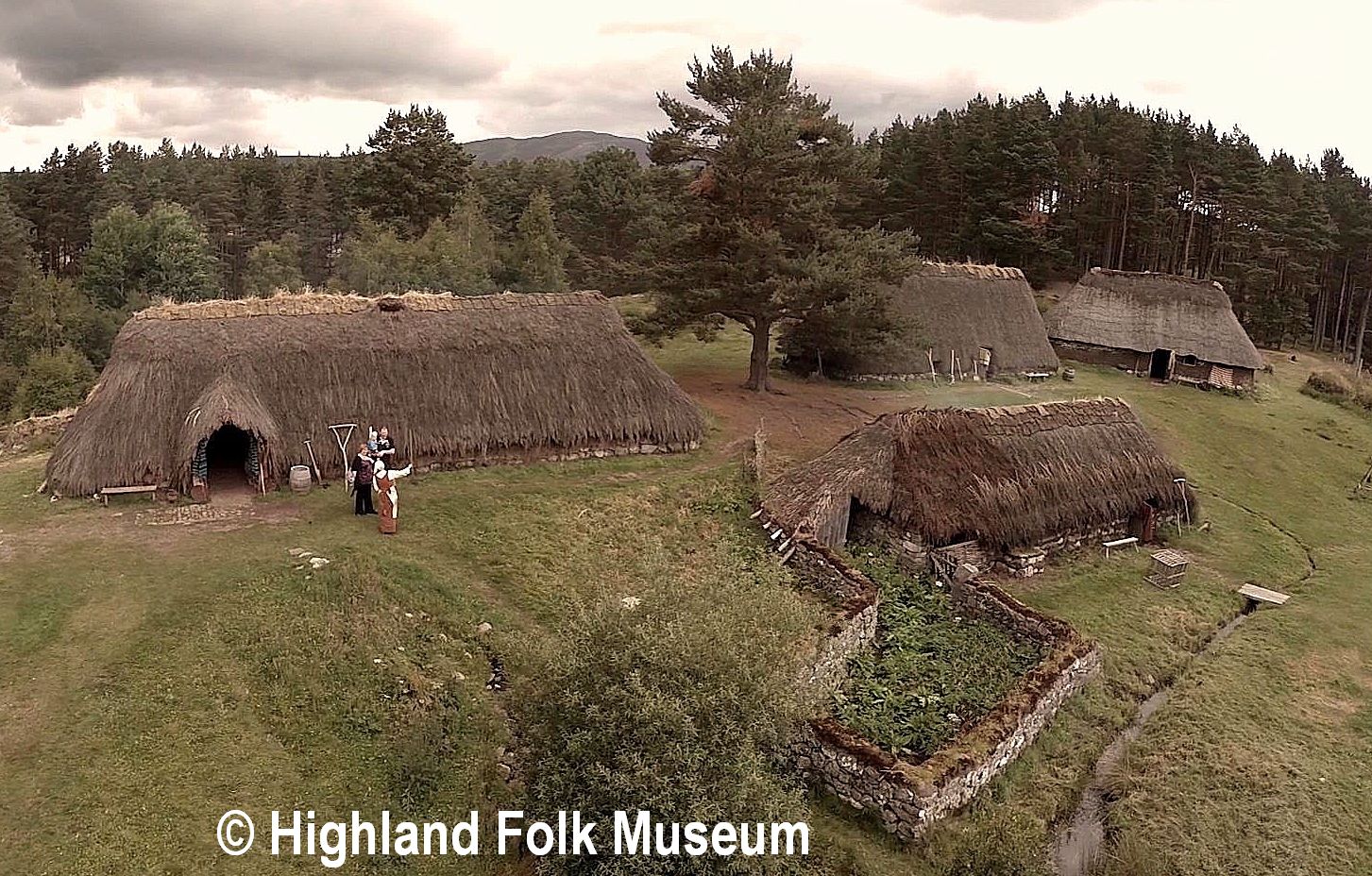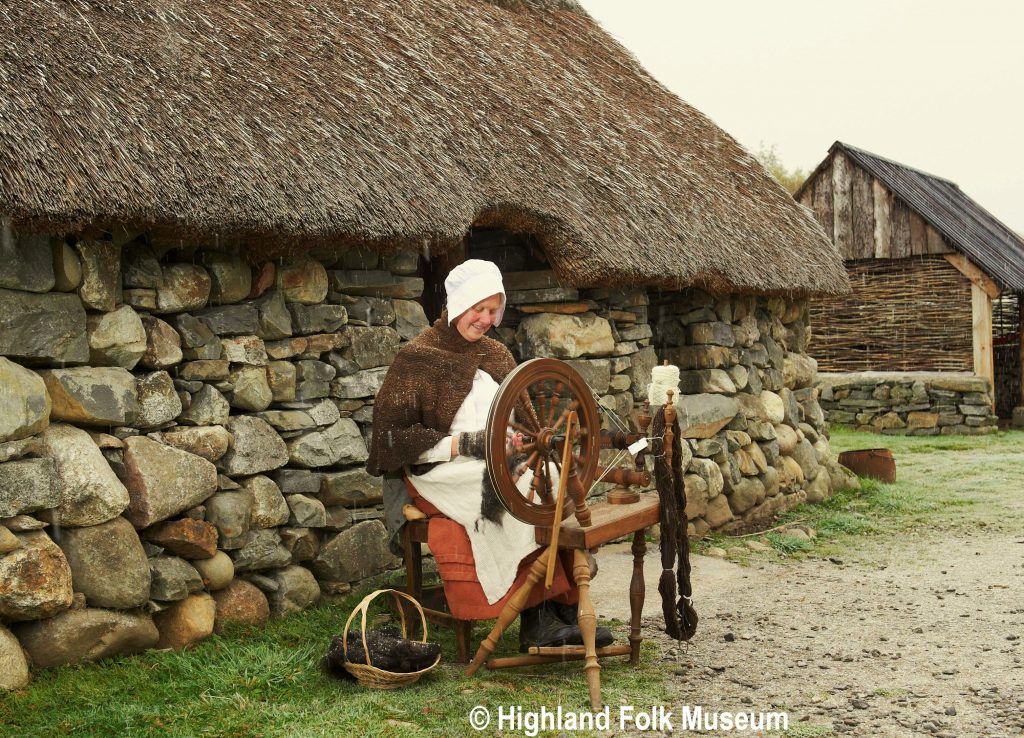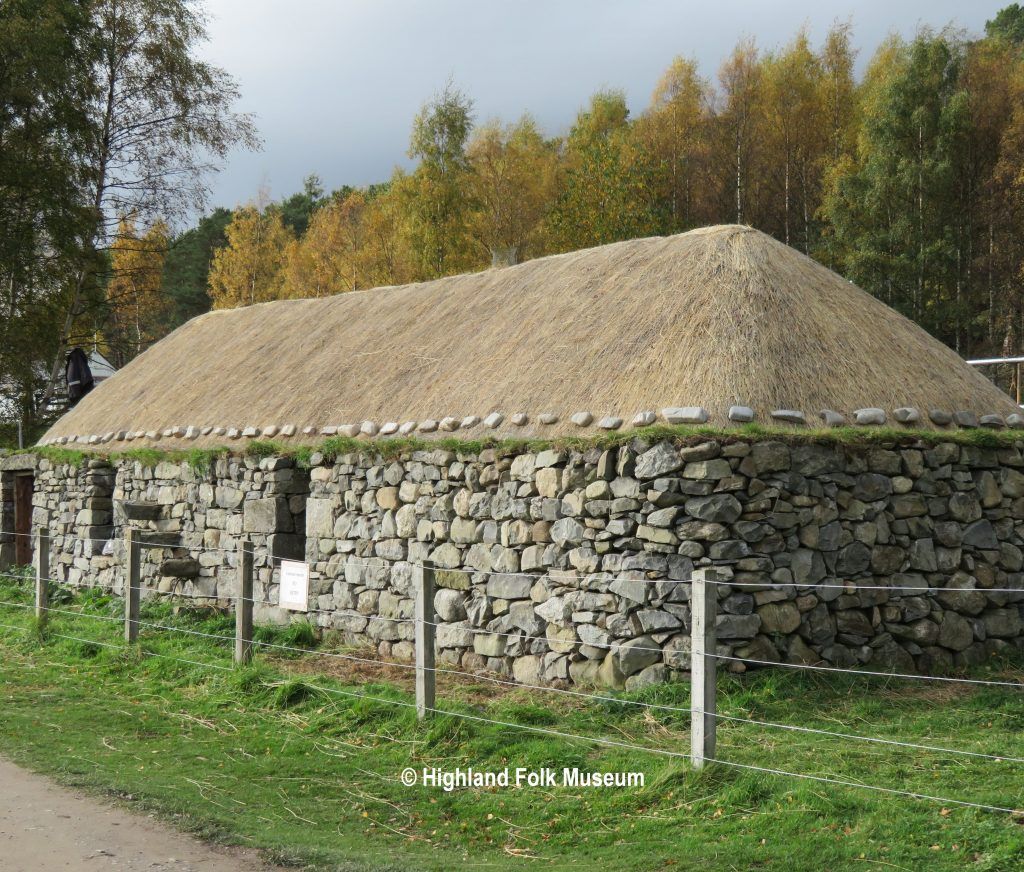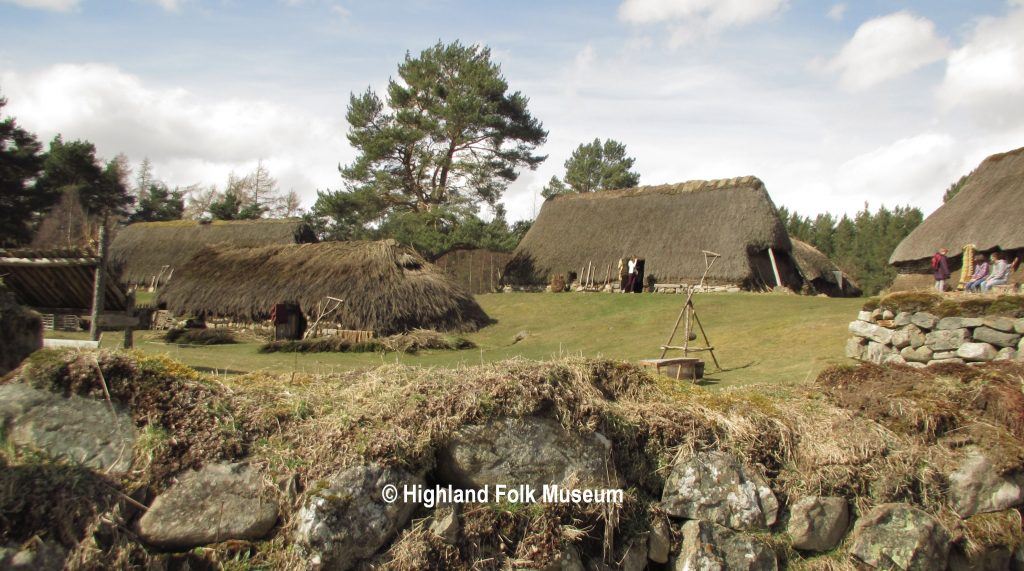Visit the Highland Folk Museum
Well, here is another great place to visit and see how Highland people lived and worked from 1700s up to 1950s, the Highland Folk Museum. Located at Newtonmore in the Scottish Highlands, there are over 30 historical buildings at the museum. Some of the buildings have been built from scratch and some have been moved from other locations. Many of them are thatched.
A mile long site with a township, working croft, café, gift shop and children’s playground, free car park, as well as over 12,oo artefacts at the Am Fasgadh collection story where there are also high quality meeting rooms, research library and conservation laboratory. The Highland Folk Museum is more than a museum and has a lot of ‘value added’.
The History of the Folk Museum
Founded in 1935 on the Island of Iona by Esabel F Grant, artefacts were collected and then it was moved to a disused church at Laggan, Inverness-shire. Dr Grant bought a 3 acre site in Kingussie and in 1944 the Highland Folk Museum was opened to the public. Here the site was developed in incorporate 3 replica buildings, tools and machinery. This site is acknowledged as mainland Britain’s first open air museum
Highland Folks Museum now
Early 1980s saw the Highland Folk Museum, now owned by the Highland Council, moved to Newtonmore (an eighty acre site). The site is divided into four main areas, a croft, a working farm, a village and the township.
In 2013 the purpose built storage facility Am Fasgadh was finished and then the collection was moved from Kingussie. Over 10,000 items are housed here, along with the other facilities (meeting rooms, library and offices). Appointments are required to see the collection or join the guided tours.
Highland Folk Museum Collections
Most of the items in the collections were collected by Dr Grant with additions since then under ownership of the Scottish Universities and the Highland Council.
- Agricultural Collection
- Domestic Collection
- Crafts Trades and Industries
- Building
- Applied Arts
- Textiles and Costume
- Sports and Pastimes
- Archives and Photographs
Our main interest was in the thatched buildings on this site but it there is so much more to see, understand and learn from this fascinating site.
Highland Folk Museum visitor information
The museum offers free parking for all visitors and is free entry (donations are welcome).
This year they are open from:-
28th March to the end of August 10:30 to 17:30
1st September to 31st October 11 – 16:30
Toilet and baby changing facilities are available and assistance dogs are welcome. There are some facilities for other dogs (at your own risk).
Highland Folks Museum Events
There are in 2018:-
- Collection store tours every Tuesday from 1 May until 30th October.
- Festival of Museums – Travellers’ Tales – 19th May
- Vintage Day – Sunday 27th May
- Outlander Day – 9th June
- Woolly Weekend – from lamb to loom – 23rd and 24th June
- Re-enactment Weekend 30th June and 1st July
- Heritage Action Days 5, 12, 19 and 26th July and 2, 9 and 16 August.
- Coming home travelling exhibition Wed 25th July – Sunday 26th August.
- Forest Fest – 11th and 12th August
- Annual Seminar 10th October
- Doors Open Days 22nd and 23rd October
More events will follow on the Highland Folk Museum website.
Thatch at the Highland Folk Museum
Around a quarter of the buildings at the Highland Folk Museum, are thatched. Obviously that is how we first became aware of the site.
The Township is all thatched buildings in heather and broom and the Black house is in Marram grass.
The two Shielings are also thatched so there is plenty of traditional thatch to see as part of your visit.
Thanks also to the Highland Folk Museum for the great pictures of their thatched buildings, we are sure you will enjoy your visit to such a great open air place. Remember, they are on Facebook and Twitter too.







